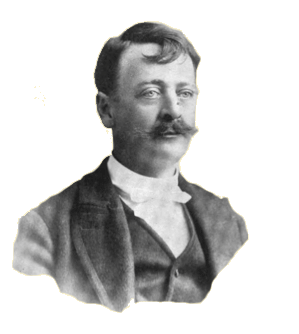|
||||||||||||||||||||||||||||||||||||||||
|
 Burnette G. Haskell, "President of the Colony," Photo by Howland & Lonegran, San Francisco, 1902. Larger. In 1885, socialist visionary Burnette G. Haskell co-founded the utopian Kawaeh Colony. Drawing on Marxist ideas and his experience as a labor organizer, Haskell believed that the majestic giant sequoia forests of Tulare County provided an ideal location for his colony. The fates seemed to smile upon the enterprise at first. A location was found. On the Sierra slopes of the western borders of Tulare County, beneath the shadow of Mount Whitney, grew a vast body of timber, some of it of giant growth, but the largest portion of merchantable pine, fir, and redwood. It had been offered to the people by the United States for years, but remained unentered. The lumber monopolists of that section had surveyed and pronounced it inaccessible, it being nearly two miles high, crowning an abrupt range to which it was believed impossible to build a road. But the great San Joaquin Valley needed this timber and would be its natural market. Its treeless plains were being made into orchard homes, and lumber was requisite as much as water for the soil. A vast population, ever growing, would during this generation occupy these plains and look to these forests for their natural wood supply. It could be teamed to the valley if but a road could be built.Though the road was eventually built, the utopia faded and the cooperative experiment ended. The area officially became Sequoia National Park on September 25, 1890. In 1902, Burnette Haskell published Kaweah: How and Why the Colony Died as a monument to his belief in the ultimate justice of his socialist experiment. –Contributed by Meghan Bass. |
|||||||||||||||||||||||||||||||||||||||
|
© 2000-2013 California Legacy Project, Santa Clara University English Department, Santa Clara University, 500 El Camino Real, Santa Clara, CA 95053.
For more information: Terry Beers, 408 554 4335, or . 



|
|

|







